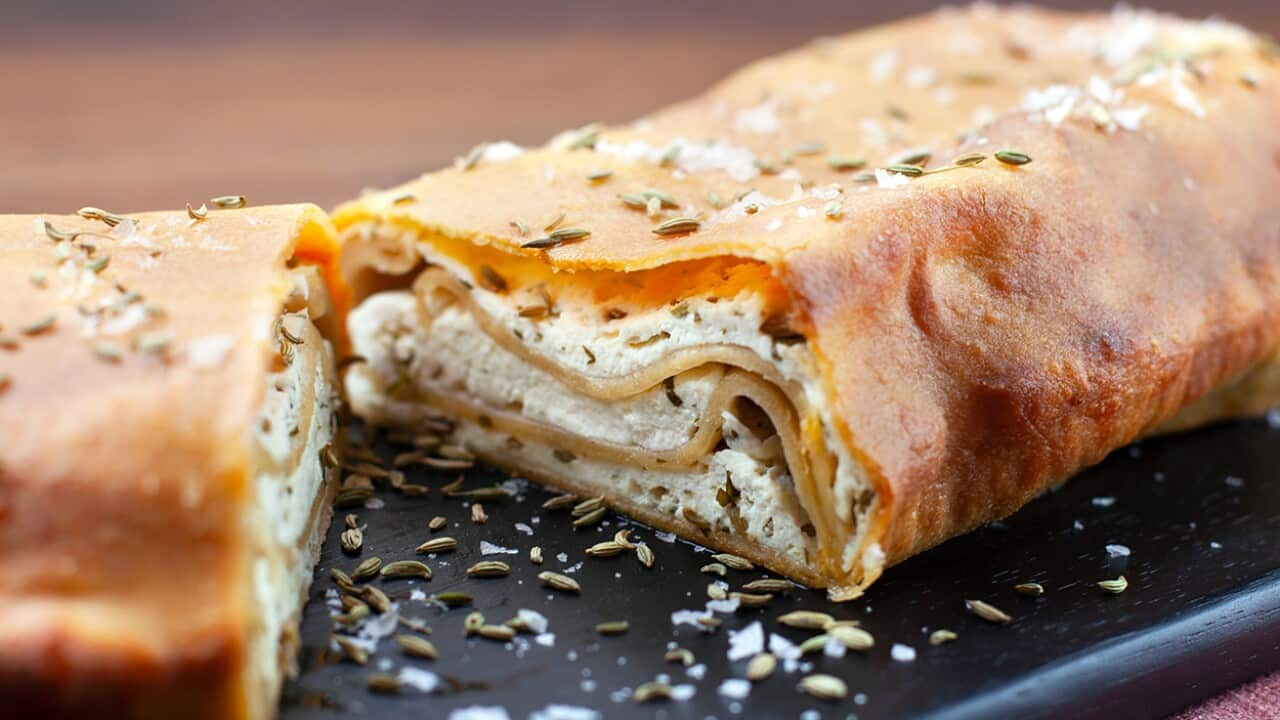“Why is ricotta so good?”
I remember hearing someone (could have been me) utter this magical sentence when wrapping their (my) hands around a .
Mild and creamy in texture, ricotta can be firm and cool, perfect for or warm and melt-in-your-mouth, dolloped on fresh figs or spread onto
Here's one we prepared earlier

Neapolitan semolina and ricotta cake (migliaccio)
Ricotta, literally means ‘recooked’ and it is often referred to as a ‘cheese’ even though it’s a dairy or cheesemaking byproduct. During the cheesemaking process, the liquid that is left, known as the whey, can be recooked with a little milk and acid, to create ricotta and traditionally speaking this is how the ricotta story began.
While you can find buffalo, sheep’s or goat’s milk varieties, cow’s is the most common and this recipe below begins with only milk rather than whey.
Is cooked milk the same as the whey?
Short answer, no. Not really.
The milk is cooked, coagulated (by adding acid, either lemon juice or vinegar), and separated. The curd forms the cheese and that strained liquid that remains at the bottom is known as the whey. It really is that simple.
To make this ricotta, ensure you don't rush the cooking time by going too high on the temperature and be sure to use full-fat milk all the way. I also like to add a little thickened cream for an even creamier texture. You will also need a mesh or cheesecloth, a tea towel won't work. How to make three-ingredient ricotta
How to make three-ingredient ricotta

All you need is milk, lemon juice and salt. Source: Farah Celjo
This recipe makes about 400 g of ricotta.
Line a colander or large sieve with a dampened mesh or cheesecloth that’s been folded three or four times and placed comfortably over a large bowl and set aside.
Bring to a simmer
- 2 litres of full-fat milk.
Add 100 ml of thickened cream (optional) here for a creamier finish.
Stir
- 1 tsp salt
Stirring consistently to ensure the milk mixture doesn’t begin to discolour.
If you’ve got a thermometer, you’ll want to get the milk to about 85ºC before adding:
- 80 ml lemon juice
If you don’t have a thermometer, then once the milk is steaming, not yet bubbling, add the lemon juice. With a wooden spoon, gently stir the pot for a minute or so and you’ll begin to see the separation between the curds and whey.
Taking your pot off the heat, cover it with a lid and let it sit. The longer you leave the curds in the whey, the larger and firmer the curds will become. Check at 5-8 mins for a very fluffy and whipped-like ricotta and 15-20 mins for a creamy, slightly firmer ricotta. Don’t let the word ‘firmer’ deter you from leaving it in the pot. Ricotta is a fresh cheese and it will retain much of its moisture.
Spoon your curds into the lined colander, straining as much of the whey as you can into the bowl.
While the leftover liquid might not look like much, definitely don’t throw it away. You might just have a jar of rich - if you’re patient.
READ MORE

How to make whey caramel sauce
You can use the ricotta instantly or refrigerate it in a covered bowl or container to be used within 3-4 days. Love the story? Follow the author here: Instagram .
Love the story? Follow the author here: Instagram .

Now you've got the curd, what are you going to make? Source: Farah Celjo








